The Neutrino and Dark Matter Group at MIT is more than just about neutrinos, or dark matter. The consortium of four faculty members (Conrad, Formaggio, Perez and Winslow) are focused on understanding the properties of some of the most elusive particles in the Universe, both to strengthen our understanding of the Standard Model and to push its boundaries. The group is involved in understanding questions regarding the scale and nature neutrino mass and the origins of the matter/anti-matter asymmetry in the universe. It is involved in particles from terrestrial sources and from the cosmos. Their means and methods involve instruments that hover above the atmosphere and that live many miles below the Earth’s surface. They range in size from complete ice sheaths to detectors that fit in the palm of your hand.
To find out more, check out the following links:
 The Conrad Research Group
The Conrad Research Group The Formaggio Group
The Formaggio Group  The Winslow Group
The Winslow Group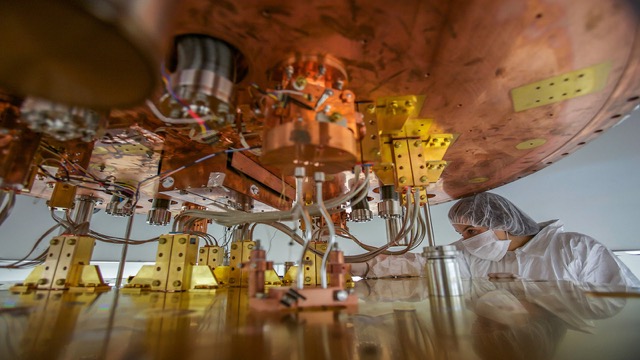
CUORE cryostat, in Gran Sasso, Italy
| Name | Phone | Office | |
|---|---|---|---|
| Janet Conrad | 617-324-6281 | 26-537 | conrad@mit.edu |
| Peter Fisher | 617-253-8561 | 26-403 | fisherp@mit.edu |
| Joseph Formaggio | 617-253-3817 | 26-561 | josephf@mit.edu |
| Brooke Russell | 617-253-8538 | 26-541 | russell3@mit.edu |
| Lindley Winslow | 617-253-2332 | 26-569 | lwinslow@mit.edu |
| Name | Phone | Office | |
|---|---|---|---|
| Jose Alonso | c/o 26-552, Off-campus | jralonso@lbl.gov | |
| William Barletta | 617-253-6502 | 26-402A | barletta@mit.edu |
| Adriana Bungau | Off-campus | abungau@mit.edu | |
| Sumita Ghosh | 26-567 | sumitag@mit.edu | |
| John Hardin | 26-565 | jmhardin@mit.edu | |
| Jarrett Moon | 26-540 | jarrett@mit.edu | |
| Vassilios Papavassiliou | Off-campus/26-537 | pvs@nmsu.edu | |
| Doug Pinckney | 315-380-3326 | 26-551 | hdpinck@mit.edu |
| Brooke Russell | 617-253-8538 | 26-447 | russell3@mit.edu |
| Austin Schneider | Off-campus | aschn@mit.edu | |
| Juliana Stachurska | 26-570 | jstach@mit.edu | |
| Wouter Van De Pontseele | 26-570 | wvdp@mit.edu | |
| Daniel Winklehner | 26-540 | winklehn@mit.edu |
| Name | Phone | Office | |
|---|---|---|---|
| Elysse Galarza | 617-253-7062 | 26-516 | egalarza@mit.edu |
| Name | Phone | Office | |
|---|---|---|---|
| Jessica Tokuko Fry | 26-551 | jtfry@mit.edu | |
| Eleanor Hoch | nchoch@mit.edu | ||
| Mingyu Li | 26-551 | mingyuli@mit.edu | |
| Daniel William Mayer | 26-567 | dmayer@mit.edu | |
| Darcy Newmark | 26-570 | dnewmark@mit.edu | |
| Kaliroe Mabelle Pappas | 26-565 | kaliroe@mit.edu | |
| Junior Ivan Pena | 26-570 | juniorpe@mit.edu | |
| Faith Cavazo Reyes | 26-551 | freyes@mit.edu | |
| Joshua Villarreal | villaj@mit.edu | ||
| Philip Weigel | 26-540 | pweigel@mit.edu | |
| Weiran Xu | 26-570 | weiranxu@mit.edu | |
| Jiatong Yang | jiatongy@mit.edu | ||
| Kelsey Amber Yee | 26-544 | kelseyy@mit.edu |
Physicists Remotely Sense Radioactive Decay to Probe Fundamental Forces and Particles
The Project 8 and He6-CRES collaborations use a new technique to set an upper limit on neutrino mass and prepare to test the nature of the weak force.
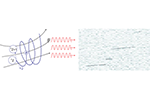
Closing in on the Elusive Neutrino
Project 8 marks a major milestone in its quest to measure neutrino mass
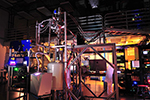
How ‘The Legend of Zelda: Tears of the Kingdom’ plays with the rules of physics
Link's world is based on our reality, but its natural laws get bent for magic and fun.


Commons:Wiki Science Competition 2021/Winners/United States
IceCube Neutrino Laboratory at night by John Hardin. (Astronomy) The ICL during the South Pole winter.
Sastrugi at dawn by John Hardin. (General Category) A sastrugi, a snow feature formed by wind erosion, that formed over winter at the South Pole.


Daniel Winklehner received the 2022 DPF Instrumentation Early Career Award
For the development of new accelerator technology enabling an order of magnitude increase in the current delivered from a compact proton cyclotron. This work was carried out using artificial intelligence techniques and has enabled the realization of the IsoDAR experiment that will play a decisive role in the search for sterile neutrinos.

November, 2022
A new upper limit on the mass of neutrinos
Researchers with the KATRIN experiment determine that neutrinos are lighter than 0.8 eV/c2.
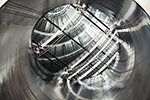
February 14, 2022
3 Questions: Investigating a long-standing neutrino mystery
Graduate student Nicholas Kamp describes the MicroBooNE experiment and its implications for our understanding of fundamental particles.
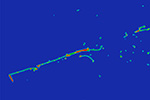
October 28, 2021
Is the Great Neutrino Puzzle Pointing to Multiple Missing Particles?
Years of conflicting neutrino measurements have led physicists to propose a “dark sector” of invisible particles — one that could simultaneously explain dark matter, the puzzling expansion of the universe, and other mysteries.

October 28, 2021
Liu and Winslow named American Physical Society Fellows for 2021
APS names Hong Liu, Lindley Winslow MIT’s newest fellows for their contributions to physics.
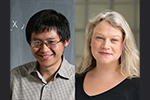
October 18, 2021
Particle physicist Lindley Winslow seeks the universe’s smallest particles for answers to its biggest questions.

March 24, 2021
Pulling the secrets of dark matter out of a hat
Grad student Chiara Salemi and Professor Lindley Winslow use the ABRACADABRA instrument to reveal insights into dark matter.
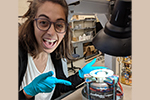
December 2, 2020
Naturally Occurring Radiation Limits Superconducting Qubit Coherence Times
Department of Energy Spotlight
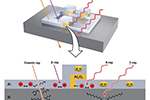
September 18, 2020
Can a quantum strategy help bring down the house?
Study finds quantum entanglement could, in principle, give a slight advantage in the game of blackjack.
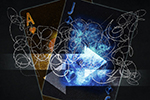
August 3, 2020
Lindley Winslow, One of MIT School of Science professors receives tenure for 2020
Professors earn tenure in the departments of Brain and Cognitive Sciences, Chemistry, Mathematics, and Physics.
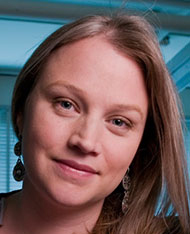
July 7, 2020
Kerstin Perez, One of Ten Early-Career Physicists
Junior faculty in experimental particle physics and astrophysics talk about how they got into physics, their favorite parts of the experimental process and how they spend their time outside the lab.
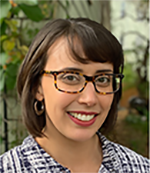
November 26, 2019
Four from MIT named American Physical Society Fellows for 2019
Matthew Evans, Joseph Formaggio, Markus Klute, and Anne White are named MIT’s newest APS fellows for their contributions to physics.
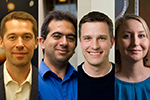
September 20, 2019
3Q: Scientists shave estimate of neutrino’s mass in half
Joseph Formaggio explains the discovery that the ghostly particle must be no more than 1 electronvolt, half as massive as previously thought.
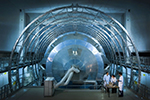
September 16, 2019
Dark matter experiment finds no evidence of axions
In its first run, ABRACADABRA detects no signal of the hypothetical dark matter particle within a specific mass range.
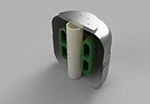
March 29, 2019
Not your Standard Model physicist
Professor Janet Conrad is on a quest to find the elusive “ghost” particle—and turn physics on its head.

October 23, 2018
Four Honored with School of Science Teaching Prizes
Moitra, O’Gorman, Perez, and Minicozzi were nominated by students and colleagues for demonstrating excellence in instruction.

August 20, 2018
Paying it Forward: Fellowship Boosts Women in Physics
Four students are first beneficiaries of grant program established by Assistant Professor Lindley Winslow with support from the Heising-Simons Foundation.
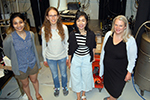
August 2, 2018
New Study Again Proves Einstein Right
Most thorough test to date finds no Lorentz violation in high-energy neutrinos.
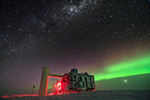
July 16, 2018
3Q: Janet Conrad on the First Detection of a Neutrino’s Cosmic Source
The “ghostly particle” is confirmed to have originated from a blazar, nearly 4 billion light years from Earth.
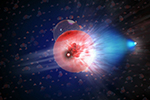
July 13, 2018
3 Questions: Pinning Down a Neutrino’s Mass
KATRIN experiment investigates the ghostly particle.
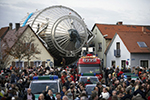
June 8, 2018
Scientists Report First Results from CUORE Neutrino Experiment
Data could shed light on why the universe has more matter than antimatter.
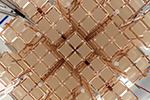
March 26, 2018